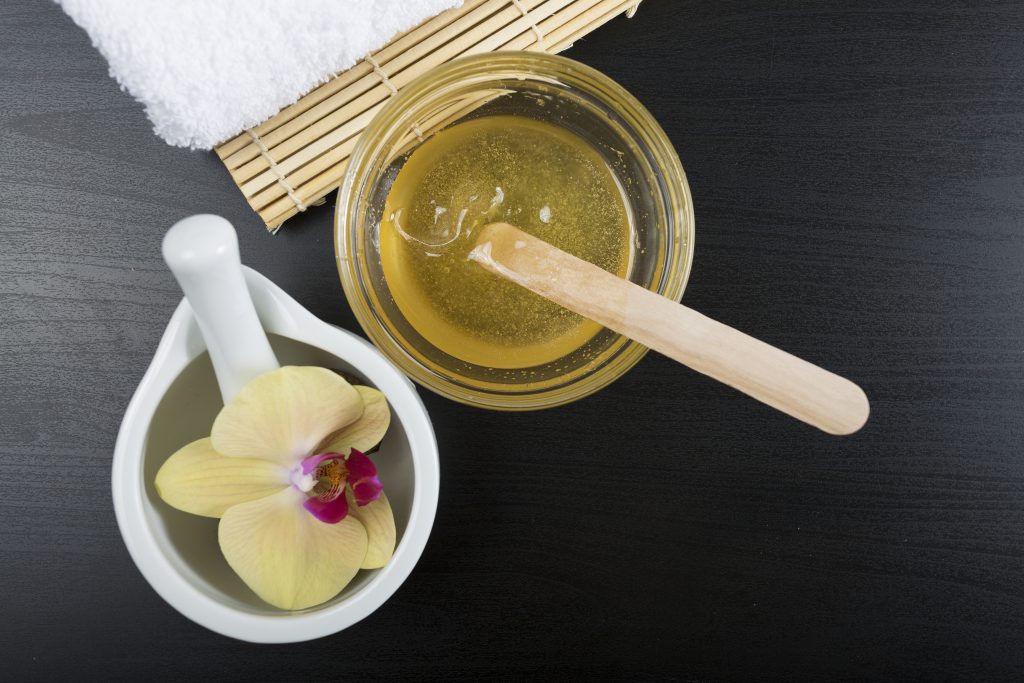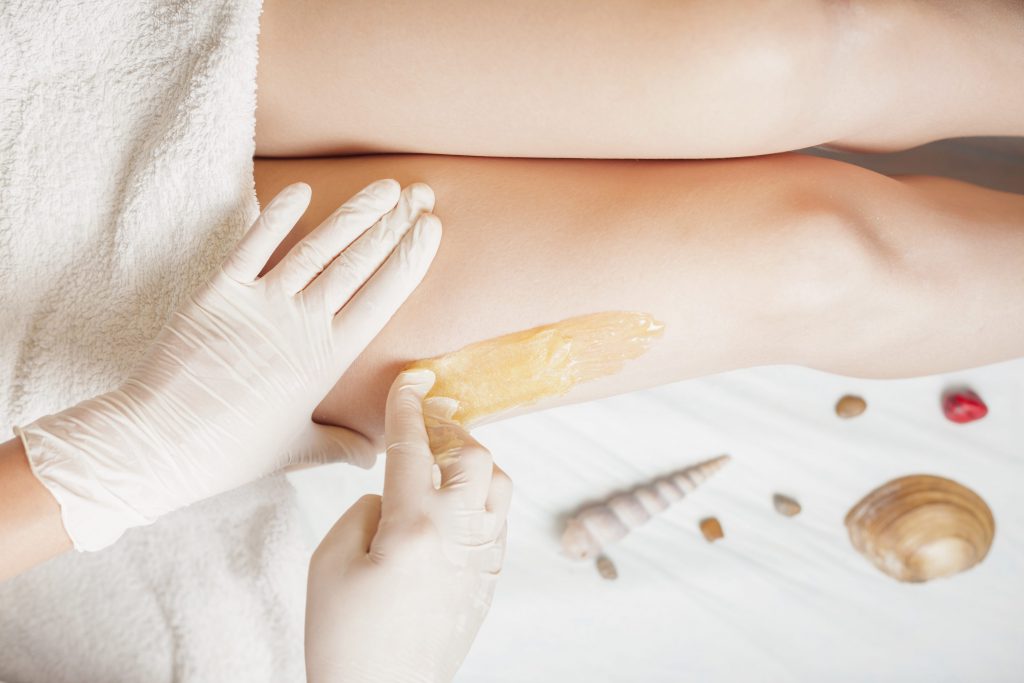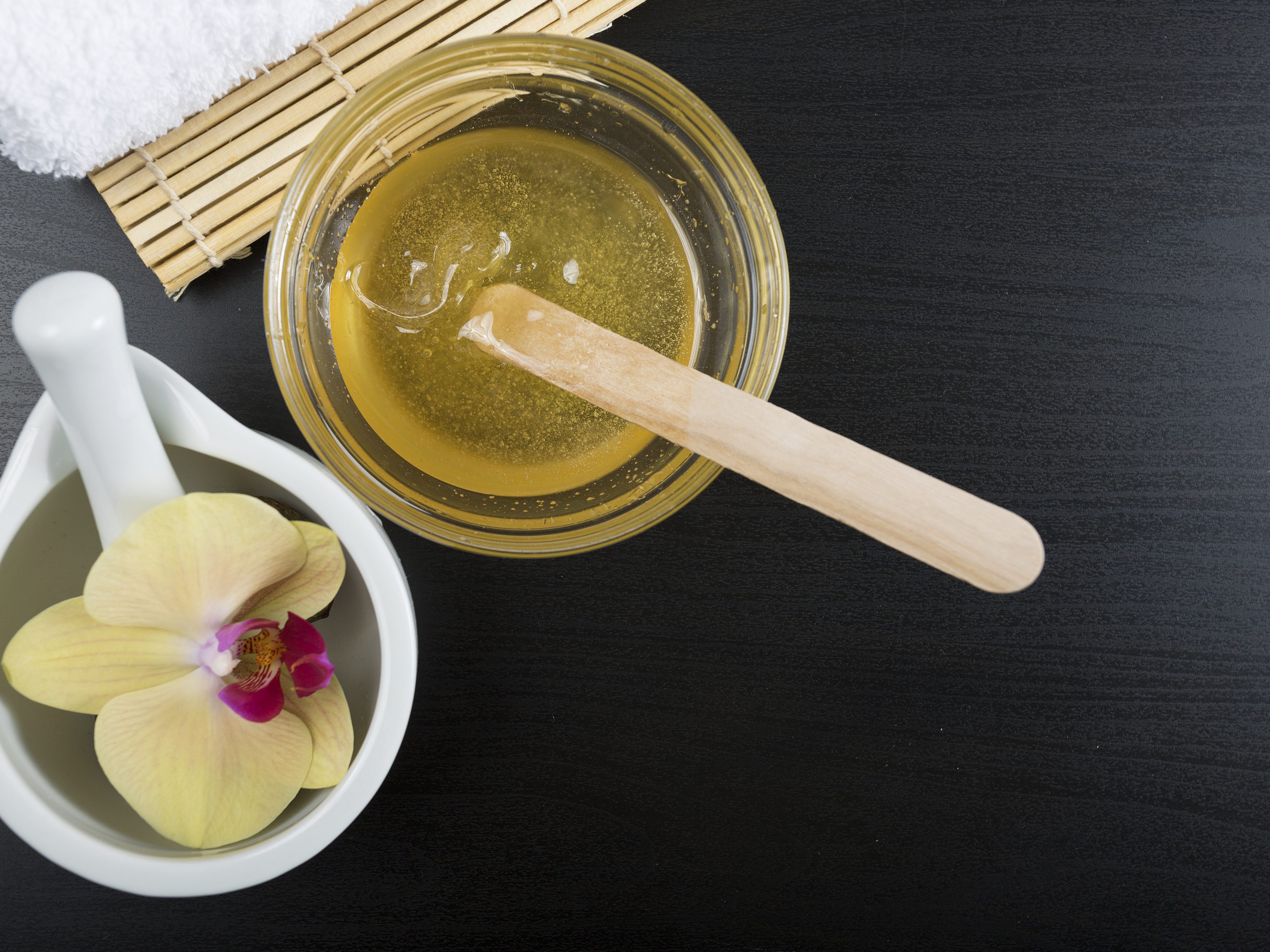Thinking of introducing body sugaring to your treatment menu? We ask Lilliane Caron our nine burning questions about sugaring and what we should consider before taking on this sweet treatment.

An early form of waxing, sugaring has been around for centuries. Recently though, it has re-entered the beauty market. So why, after centuries of taking a backseat to waxing, has sugaring started to make a comeback? Why are clients suddenly requesting the treatment?
“These days, consumers are looking for more natural alternatives for their food, skincare and cleaning products and are taking more notice of what we are putting on and in our bodies,” says Lilliane Caron, owner and director of Caronlab.
Many modern-day sugaring brands are claiming less pain, no skin irritations and longer lasting results. So should a beauty professional switch their wax to sugar?
“[Sugaring brands] have put a spin on the technique to make it seem superior,” says Caron. “While there are some very relevant advantages to sugaring, these claims are not all true. There is also a level of secrecy among many sugaring professionals which makes sugaring seem even more exclusive.”
We ask Lilliane Caron about the differences between waxing and sugaring, the techniques of the two treatments, who sugaring works best for, and what you should consider before getting into the sweet stuff. (In other word, everything you need to know.)

So what is body sugaring…?
The technique of sugaring uses a natural toffee-like substance that is kneaded into the skin repeatedly, removing the hair as it goes. The paste is spread or moulded onto the skin by hand or with a spatula against the direction of hair growth. It is said to seep down into the hair follicle and wrap itself around the shaft of the hair. When the sugaring paste is flicked off, the hair including the bulb slides out in the direction in which it grows. This technique differs to waxing which removes the hair in the opposite direction. One of my very first memories of hair removal is making my own sugar paste with my Lebanese friends and using it on each other! Back then sugaring was more common because you would actually make it yourself in a pot on the stove. How funny it is, that everything seems to work in a full circle!
What are the technique differences between waxing vs sugaring ?
While waxing and sugaring techniques are different, the results are much the same when performed correctly. Therapists who have been trained in waxing and decide to offer sugaring essentially need to “unlearn” everything they know about waxing to become a proficient body sugarer and perfect their technique.
Some clients will swear black and blue that sugaring hurts less than waxing, but just like any treatment it really comes down to the skill of the therapist. Both techniques remove hair from the follicle and that’s not going to tickle. They can however be substantially less painful if the therapist is performing the treatment with a good technique. For some clients, a bad wax from an inexperienced therapist can make a good sugaring treatment seem like the pinnacle of hair removal. Someone who has never experienced a good wax treatment won’t realise that waxing should be better, and unfortunately a bad experience can be enough to deter someone from waxing all together.
Does sugaring leave clients with fewer broken hairs?
Sugar addicts also claim that waxing can lead to more broken hairs, however without a proficient technique sugaring can too. If you are using your wax correctly; at the right temperature and not speed waxing, there should be no broken hairs in sight.
We’ve heard sugaring paste can be temperamental, is this true?
Anyone who has ever heard me talk about waxes, will know that the consistency of your wax is vital when it comes to delivering the perfect waxing treatment. Sugaring is no different. Sugaring paste is warmed only slightly, making it almost impossible to burn clients. The paste gains temperature through body heat and this can play a role in how it works. It can also work differently in warmer climates and spoil easily. It will crystallise if exposed to moisture – even the smallest amount of sanitising solution or water can affect the consistency and effectiveness of the product, and if it’s heated too much it will burn. A big advantage of sugaring is that generally only one ball of paste is required per body part, so there’s no going back and forth to the wax pot or risk of double dipping.

There are different types of wax, are there different types of body sugaring?
Sugaring pastes are available in different varieties. Firm pastes are ideal for beginners as they’re easier to control. They are designed to be used on warmer areas of the body like the Brazilian and underarm, are good for smaller areas of the body and for use in warmer climates. A soft paste is suited to a more experienced therapist and for use on larger areas such as legs and arms that normally aren’t as warm. I find using a sugar-based strip wax in conjunction with your sugaring paste can speed up the process of removing hair from the larger areas whilst still giving your clients an all-natural treatment.
What’s in sugaring formulations?
Ingredients in waxes can vary greatly; they can be derived from unrefined resins (pine resin) or synthetic resins. There is much less room for variance when it comes to manufacturing sugaring pastes. Sugaring pastes or gels are essentially made from sugar, water and lemon juice. While all recipes are slightly different, it has been made from those same basic ingredients since it originated in the ancient Middle-Eastern practice centuries ago.
Let’s talk irritation. Is sugaring less irritating than wax?
Because of the basic and natural formula, sugaring is gaining a high reputation for not causing skin irritations, which is backlash that waxing can sometimes cop. Sugaring can absolutely be a solution for clients that choose not to wax because they suffer from reactions and irritations from even the most sensitive waxes. However what bugs me about this perception of waxing is skin irritations are generally not normal. If clients are suffering from irritations, it usually comes down to the wax being used and the resins they contain.

What should a therapist consider before adopting sugaring?
If you’re considering adding body sugaring to your treatment menu, there are some important things for you to think about. Firstly, ask your clients if they are happy with their waxing treatments? If they’re not happy, delve into the reasons why. Are your therapists lacking confidence or expertise? Rather than re-training your staff in a skill they have already learnt, maybe they would benefit from a refresher waxing workshop. Getting their waxing skills up to scratch will be a lot easier, quicker and cost effective than learning an entirely new technique.
You need to determine if sugaring fits your business model. Some salons and spas base all of their offerings around natural, vegan friendly and organic products and services, and this can be a real point of difference. There will always be a niche client market wanting a holistic and completely natural treatment, and business savvy salons can reap the benefits of this. Salons offering this exclusive service will generally charge more than a waxing treatment as it does take more time to perform and while cost effective, the paste does cost more per kilo than most waxes. In saying this, clients seeking natural alternatives are generally willing to pay that little bit extra.
Who is sugaring good for?
If you have a mobile business, sugaring can be a great option, especially if you’d like to specialise in it. It requires little to no heating, making travelling and setting up for appointments easy and one ball will generally get you through an entire treatment. As sugaring paste can simply be washed off with warm water, no extra product is necessary during the treatment or for cleaning-up. Clients can be turned over quickly and efficiently. Just remember to clean your mobile station regularly as ants LOVE sugar!
You should also keep in mind personal preference, it’s no secret that I favour waxing, I find sugaring more taxing on my wrists. But everyone is different, I know therapists who find sugaring to be much easier on their body, so it really does come down to what you like doing and how your body works.
While sugar paste will not necessarily replace your waxes, there may be a place for it alongside the waxes on your trolley. However if you’re simply looking to jump on the sugaring band wagon ‘just because’ I strongly urge you to re-consider.
Caronlab has just launched their NEW! Aquagel Sugaring Paste. Click here to find out more!
Lilliane Caron is owner and director of Caronlab Australia. If you’d like to get in touch, email info@caronlab.com.au or call 1800 245 412.

